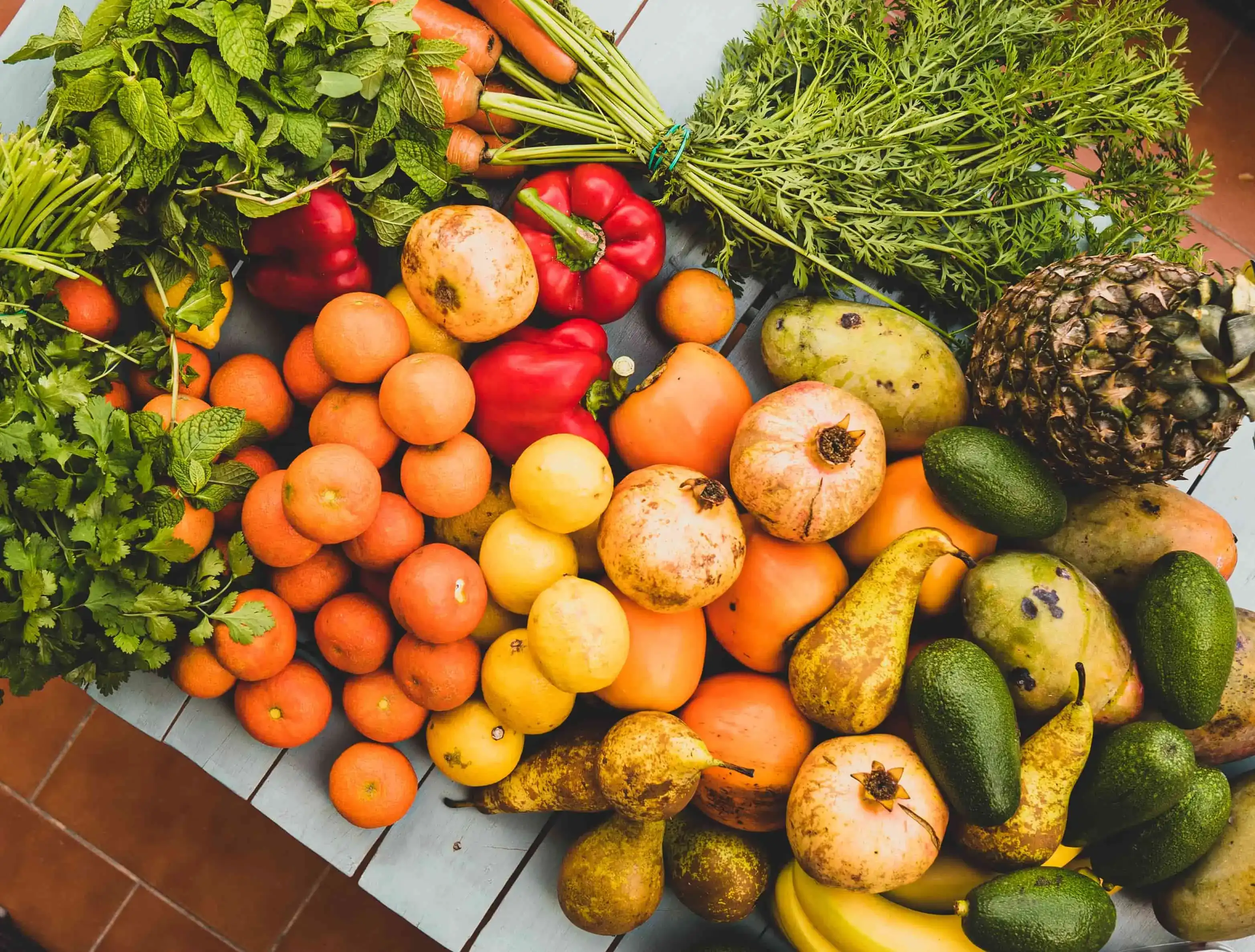A Step-by-Step Guide to Finding and Enjoying High-Fiber Products

In the quest for a healthy and balanced diet, fiber emerges as a nutritional superhero. From aiding digestion to supporting heart health, the benefits are undeniable. If you're wondering which products are packed with this essential nutrient, you're in the right place. This article will guide you step by step in discovering and incorporating fiber-rich foods into your diet, ensuring a delicious and nutritious culinary journey.
Unveiling Fiber-Rich Staples
Embarking on a journey to enhance your fiber intake opens the door to a world of wholesome and nourishing staples that can transform your meals into delicious and nutrient-packed experiences. Let's delve deeper into a variety of fiber-rich options, exploring the versatility and benefits of each.
1. Whole Grains: The Satisfying Foundation
Whole grains are nutritional powerhouses that form the heart of a fiber-rich diet. Unlike refined grains, whole grains retain their bran and germ, which are rich in fiber, vitamins, and minerals. Start your day by swapping out traditional white bread for whole grain options like whole wheat or multigrain. Gradually extend this wholesome choice to other staples like quinoa, brown rice, and oats.
Whole grains not only add a satisfying chewiness to your meals but also contribute a significant amount of fiber. Experiment with incorporating them into a variety of dishes, from hearty breakfast bowls to savory pilafs and grain-based salads.
2. Legumes: Fiber and Protein in Harmony
Beans, lentils, and chickpeas are culinary chameleons, effortlessly adapting to a myriad of dishes while delivering a hefty dose of both fiber and protein. These legumes are versatile additions to soups, stews, salads, and side dishes.
Consider introducing legumes into your diet by experimenting with flavorful recipes such as bean-based chili, lentil curry, or chickpea salads. As they enhance the texture of your meals, legumes also contribute to a feeling of fullness and satisfaction, making them a valuable ally in your quest for a fiber-rich diet.
3. Fruits and Vegetables: Nature's Colorful Fiber Packages
Fruits and vegetables are not only a feast for the eyes but also a treasure trove of dietary fiber. Embrace the rainbow of nature's bounty by incorporating a diverse array of colorful fruits and vegetables into your meals.
Berries, apples, pears, broccoli, and carrots are just a few examples of fiber-rich options. These vibrant additions not only provide essential vitamins and minerals but also contribute antioxidants that support overall health. Create visually appealing salads, smoothie bowls, and side dishes that celebrate the freshness and nutritional richness of fruits and vegetables.
4. Nuts and Seeds: Crunchy Fiber Goodness
Nuts and seeds bring a delightful crunch to your meals while offering a significant boost in fiber content. Almonds, chia seeds, and flaxseeds, in particular, are stellar choices to sprinkle over your dishes or enjoy as standalone snacks.
Incorporate nuts and seeds into your daily routine by adding them to yogurt, oatmeal, or salads. Their rich fiber content is complemented by healthy fats, making them a satisfying and nourishing addition to your diet. As you savor the crunch, you're also reaping the benefits of increased fiber intake.
Diversifying your diet with these fiber-rich staples not only ensures a spectrum of nutrients but also introduces a delightful array of flavors and textures. The journey toward a fiber-packed diet is as much about culinary exploration as it is about nourishment, and these staples pave the way for a delicious and wholesome dining experience.
Making Thoughtful Choices While Grocery Shopping
Navigating the aisles of your local grocery store is a pivotal step in your quest for a fiber-rich diet. By making informed and thoughtful choices during your shopping trips, you can ensure that your pantry is stocked with products that contribute to your daily fiber goals. Let's explore this process in detail, providing you with a comprehensive guide to crafting a fiber-conscious grocery list.
Step 1: Read Labels - A Fiber-Focused Education
When perusing the aisles, your journey to increased fiber intake begins with a keen eye on product labels. Take the time to read and understand nutritional labels, focusing on the fiber content per serving. Look for items that proudly display higher fiber percentages, signaling their contribution to your dietary goals.
Consider opting for products that derive their fiber from natural sources, such as whole grains, fruits, and nuts. Be cautious of added sugars or refined ingredients, as they may compromise the overall nutritional value of the product. Familiarize yourself with fiber-rich terms like bran, whole wheat, and whole oats to identify products that align with your dietary preferences.
Step 2: Explore the Perimeter - Fresh is Best
Embark on your shopping journey with a strategic plan: focus on the perimeter of the grocery store. This section typically houses fresh produce, lean proteins, and dairy. By gravitating towards whole, unprocessed foods found in this area, you're more likely to encounter items rich in fiber and other essential nutrients.
Load your cart with an assortment of colorful fruits and vegetables, ensuring a diverse range of fiber sources. Consider incorporating leafy greens, cruciferous vegetables, and a variety of fruits to maximize nutritional diversity. Explore the fresh meat and fish sections for lean protein options, further enhancing the nutritional profile of your meals.
Step 3: Compare Products - The Fiber Advantage
As you navigate the aisles, take the time to compare similar products. Whether it's bread, pasta, cereal, or snack bars, opt for the one with a higher fiber content. Small, conscious changes in your staple items can lead to a significant increase in your daily fiber intake over time.
Don't hesitate to explore new products specifically designed to be high in fiber. Look for whole grain or multigrain options, and consider trying alternative flours like almond or coconut flour for baking. Comparing products empowers you to make informed choices that align with your health and wellness goals.
Step 4: Embrace Variety - The Spice of a Fiber-Rich Life
Variety is not only the spice of life but also a key component of a balanced and fiber-rich diet. Challenge yourself to include a diverse range of fiber sources in your grocery basket. Experiment with different grains, legumes, fruits, and vegetables to ensure that you're receiving a broad spectrum of nutrients.
Consider incorporating ancient grains like quinoa, farro, or barley into your meals. Explore international cuisine, as it often introduces unique and fiber-rich ingredients. By embracing variety, you not only keep your meals exciting but also provide your body with an array of essential nutrients.
Step 5: Plan Ahead - Crafting a Fiber-Focused Meal Plan
Before heading to the grocery store, take a moment to plan your meals for the week. This strategic approach allows you to tailor your shopping list to include the necessary ingredients for fiber-rich recipes. Consider dedicating specific days to plant-based meals, ensuring a consistent intake of fiber from fruits, vegetables, and legumes.
Planning ahead also minimizes the likelihood of succumbing to impulse purchases that may not align with your fiber-focused goals. As you craft your meal plan, prioritize a balance of macronutrients and micronutrients, incorporating fiber-rich foods at every opportunity.
Conclusion:
Embarking on a journey to increase your fiber intake doesn't have to be daunting. By following this step-by-step guide, you'll not only discover a variety of fiber-rich products but also learn how to seamlessly incorporate them into your daily meals. Embrace the delicious possibilities that fiber-rich foods offer, and watch as your health and well-being flourish with every satisfying bite.


